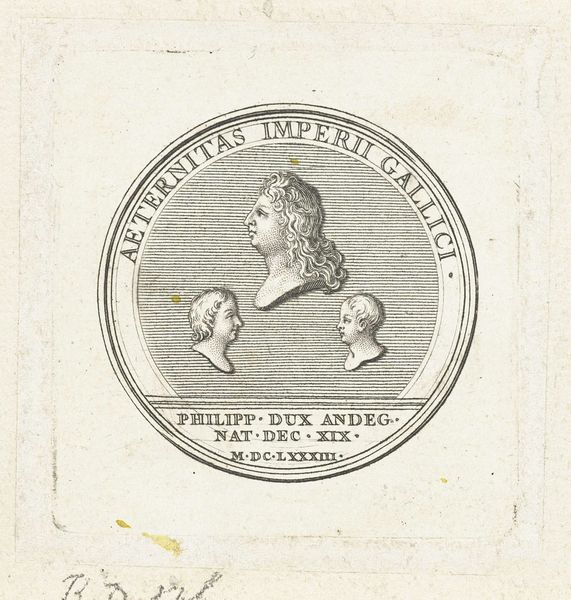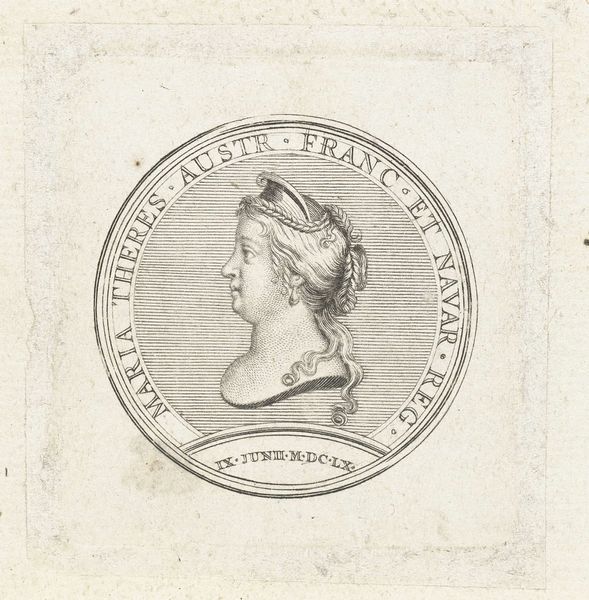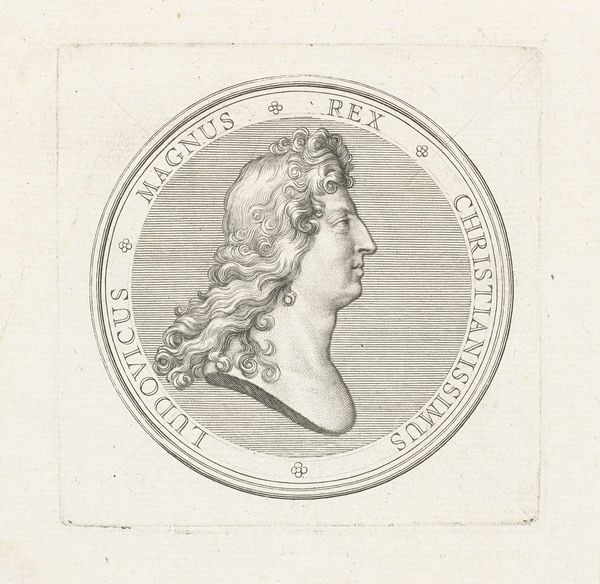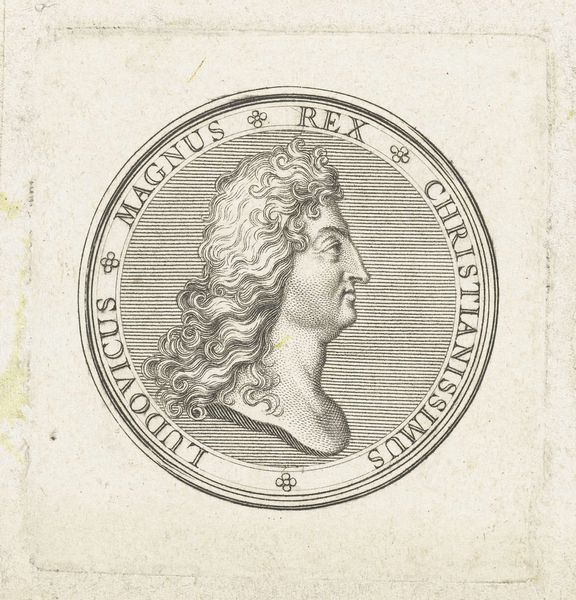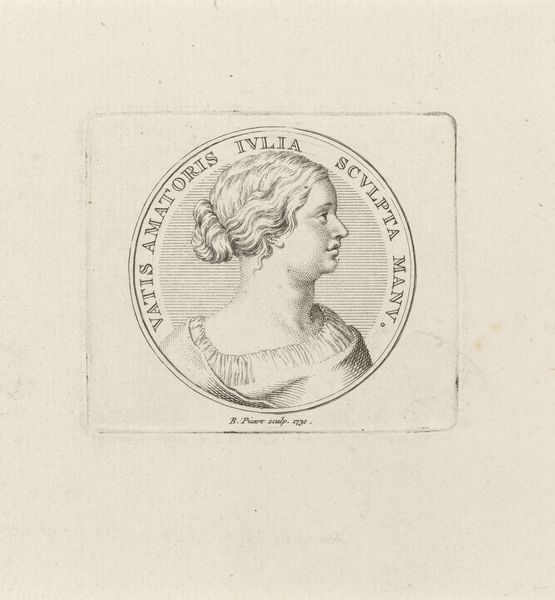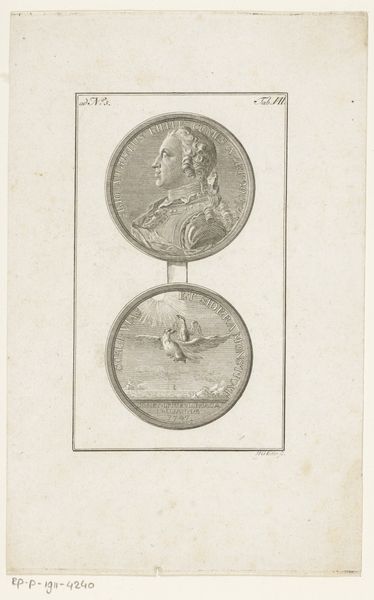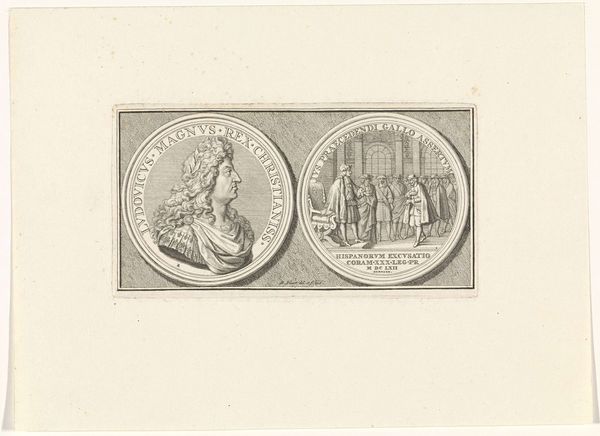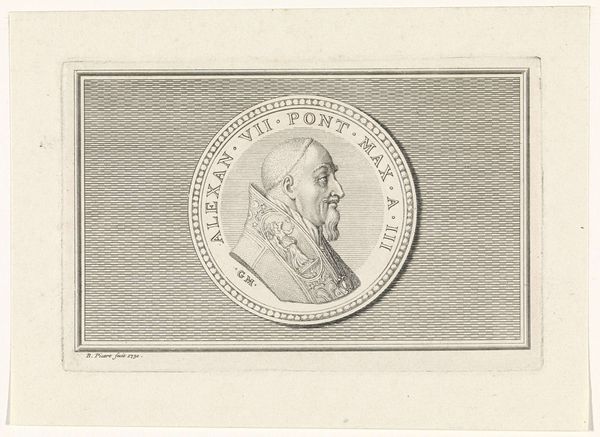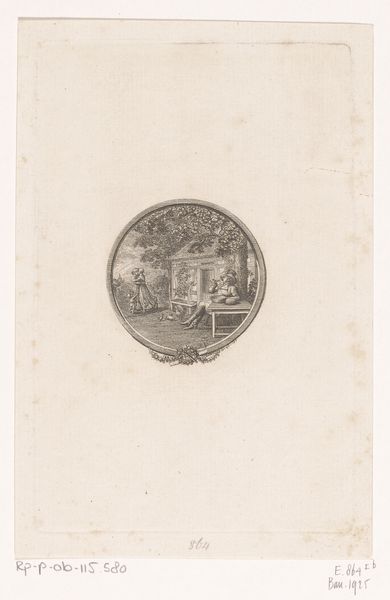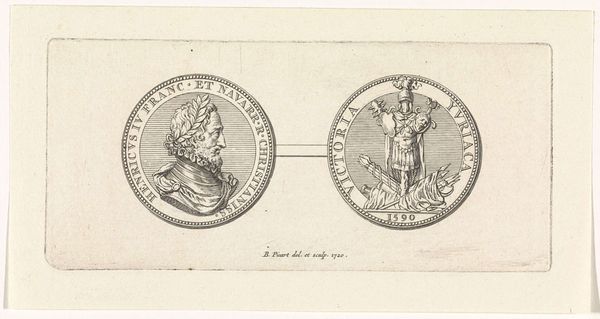
print, engraving
#
portrait
#
baroque
# print
#
old engraving style
#
history-painting
#
engraving
Dimensions: height 57 mm, width 54 mm
Copyright: Rijks Museum: Open Domain
Editor: This is "Penning met vier bustes," a print made in 1702 by Gérard Edelinck, housed here at the Rijksmuseum. It depicts four portrait busts inside a circle, seemingly from a noble family. I find the classical style quite striking. What kind of cultural narrative does this work tell us? Curator: Well, this engraving provides a window into the complex relationship between art and power in the Baroque period. Numismatic portraiture such as this reinforced social hierarchies. The Latin inscription "Felicitas Domus Augustae," meaning "the happiness of the august house" implies the central importance of family lineage. Who were the intended audiences for this kind of piece? Editor: Would this have been widely circulated or more for a private audience? Curator: Likely, a limited print run made for members of the Court, cementing and celebrating family status. Consider how printmaking allowed for a certain degree of image control and dissemination, while still catering to elite circles. Can you imagine the discussions this might spark? Editor: Perhaps this was used as gifts within political circles to establish social ties. It highlights how even a small print can speak volumes about the prevailing political order of the time. Curator: Precisely. The print's function goes beyond mere aesthetic appreciation; it served as propaganda to further and promote an idealized perception of aristocratic life. These artistic endeavors were integral to sustaining social power and reinforcing cultural norms. Editor: I didn't fully appreciate the extent to which art acts as a political statement, even back then. Now I realize I have been quite limiting my interpretation.
Comments
No comments
Be the first to comment and join the conversation on the ultimate creative platform.
